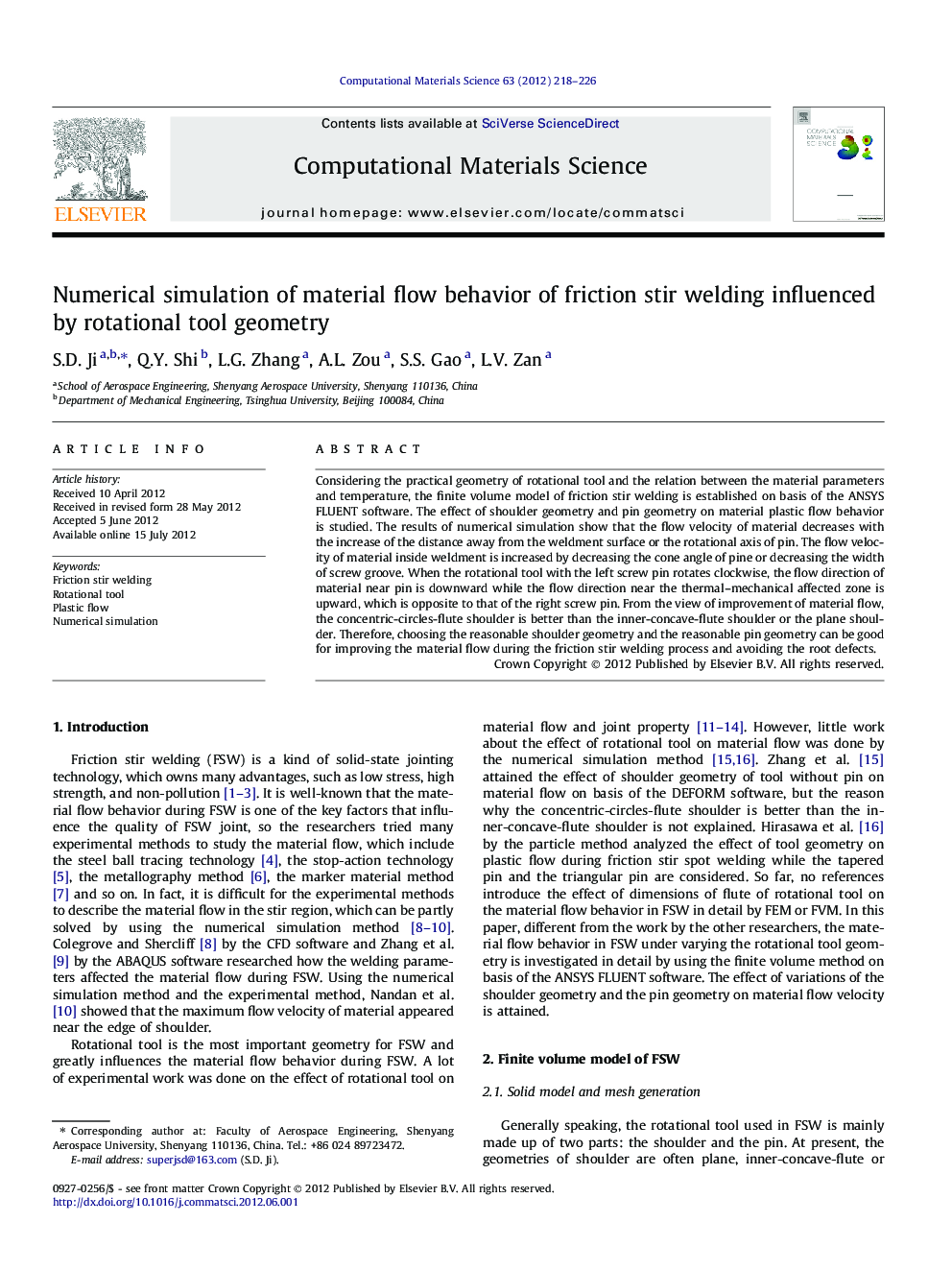| Article ID | Journal | Published Year | Pages | File Type |
|---|---|---|---|---|
| 1561486 | Computational Materials Science | 2012 | 9 Pages |
Considering the practical geometry of rotational tool and the relation between the material parameters and temperature, the finite volume model of friction stir welding is established on basis of the ANSYS FLUENT software. The effect of shoulder geometry and pin geometry on material plastic flow behavior is studied. The results of numerical simulation show that the flow velocity of material decreases with the increase of the distance away from the weldment surface or the rotational axis of pin. The flow velocity of material inside weldment is increased by decreasing the cone angle of pine or decreasing the width of screw groove. When the rotational tool with the left screw pin rotates clockwise, the flow direction of material near pin is downward while the flow direction near the thermal–mechanical affected zone is upward, which is opposite to that of the right screw pin. From the view of improvement of material flow, the concentric-circles-flute shoulder is better than the inner-concave-flute shoulder or the plane shoulder. Therefore, choosing the reasonable shoulder geometry and the reasonable pin geometry can be good for improving the material flow during the friction stir welding process and avoiding the root defects.
► A model is proposed for analyzing the material flow behavior of friction stir welding of 2014 aluminum alloy. ► The effect of shoulder geometry on material flow is researched. ► How the geometry of pin of rotational tool influences the material flow is attained.
